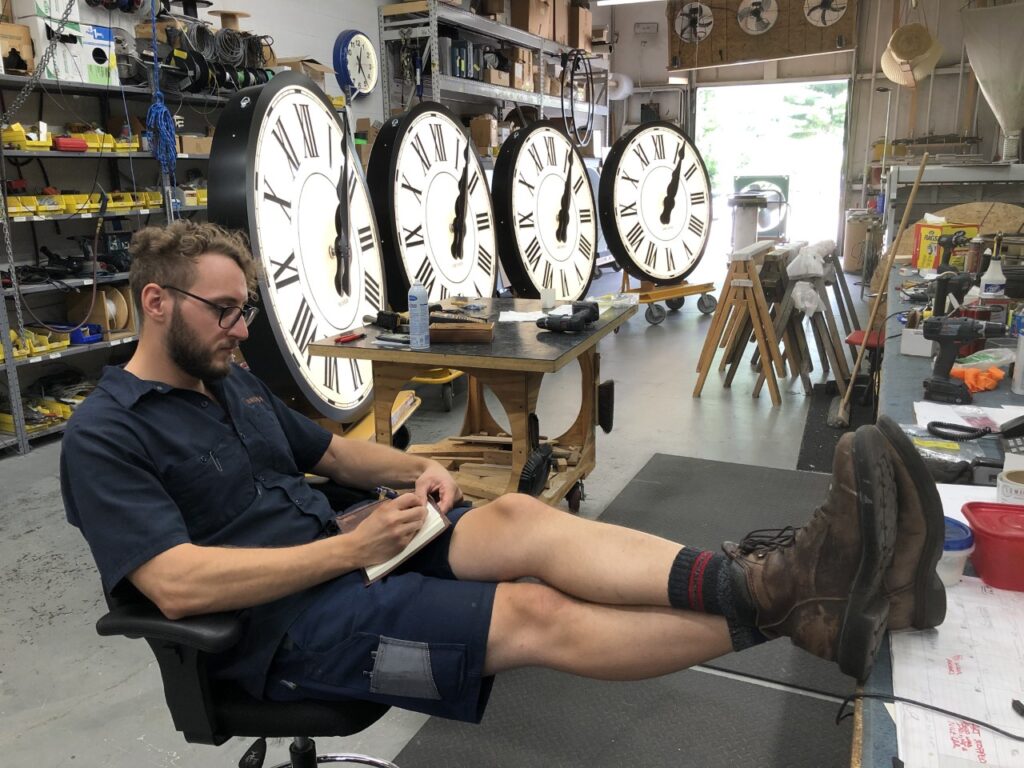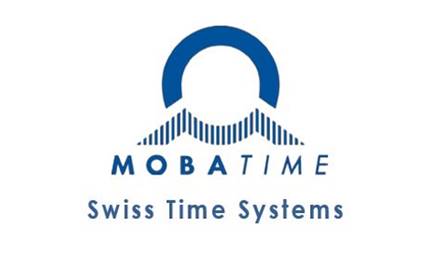
Accurate time-telling is important to your operations. It might even be essential. With a synchronized clock system, all your clocks can be set to exactly the same time, at all times.
In a manufacturing plant…the clocks on the floor need to align to the time-clocks where people punch in and out. Machines and people need to work in sync to efficiently produce your product.
In a school…small, but noticeable disruptions can occur if the clocks don’t align with the bells. If the clock is fast, a class will start packing up a few minutes before the bell. If a clock is slow, homework assignments have to be shouted as students run out the door.
In an airport…the gate agent needs to see the same time as passengers, control towers, and flight monitors. This makes life a little easier for a passenger who is running late for their flight. It’s also an important safety measure.
In a financial institution…the timing of transactions matters. Each transaction must be logged accurately. This is especially important where regulations and mandatory reporting come into play.
In a hospital…From operating theaters to nurses’ stations to medication logs, a patient’s health depends on everyone being in sync.
What Are Synchronized Clocks?
In a synchronized clock system (also known as a distributed time system), a primary controller sets the time. One or more secondary clocks, or movements, receive a signal from the primary controller. This signal tells them what time to display. The signal is received regularly, so the clocks sync regularly. All clocks in the system will always show the same time.
Railways introduced the need for synchronized clocks in the 1850’s. Up until that point, each town determined the time based on the position of the sun. However, as trains traveled from town to town, small discrepancies became apparent. These discrepancies created challenges for conductors trying to maintain a schedule. To solve this, astronomical observatories would distribute the time to railway stations by telegraph. The astronomical observatory provided the time source and the rail station clocks were set accordingly. Of course, this 19th-century system was entirely manual.
How does a Synchronized Clock System work?
Today, clock synchronization is automated—and much more precise. We partner with MOBATIME for time synchronization and distributed time systems. MOBATIME creates custom systems using various clock synchronization technologies
Manual to Completely Automatic
The Old Standard:
- A wired system where a primary controller sends electrical impulses to the secondary clocks. The impulses are sent once every minute. A motor in each secondary clock moves the minute hand forward when an impulse is received. Each secondary clock needs to be manually initialized at setup, which can be burdensome. This method is known as “conventional wired.” Because there are better options out there, it is mainly used to add clocks to older systems.
An Upgrade to the Old Standard:
- A wired system where the primary controller sends time and date data (instead of impulses) to secondary clocks. When you plug a secondary clock into the system, it is set automatically. This type of system is referred to as “wired, self-setting.” It’s relatively simple to put into operation. Unlike the conventional wired system, the secondary clocks don’t need any setup once they’re plugged in.
The New Standard:
- Network Time Protocol, or NTP for short, is the current standard for distributing time. This contemporary technology can provide synchronization within 1-10 milliseconds. The primary controller distributes date and time data to the secondary clocks via Ethernet or LAN. The clocks automatically set themselves to the correct time. You can monitor and control the whole system with a computer. If a new system is complex, this is the go-to. As a bonus, it can often be integrated into existing IT infrastructure.
GPS Signal or Radio Signal:
- A clock system can work without a dedicated controller by sourcing time from a publicly available reference, such as GPS (signal from satellites in space) or WWVB (radio signal of atomic time from Fort Collins, Colorado).
Wireless:
- In a wireless system, the controller clock transmits the date and time data through an onsite transmitter. This can be advantageous where cable installation doesn’t make sense. It’s also great for systems with a lot of clocks—an unlimited amount of clocks can be controlled by a single transmitter.
Time Servers
We’ve come a long way from time synchronization by telegraph. The Dhaka Mass Rapid Transportation project in Bangladesh shows just how far. A precise MOBATIME Time Server is used for the primary controller. Sub-controller clocks at each station receive date and time data from this controller. Clocks and equipment throughout each station get their signal from the sub-controller clocks. According to MOBATIME’s website, the clock system is set for “99.99% availability and precision” across the network.
But not all of our projects are that complex. At Nova Southeastern University, a set of 4 Lumichon tower clocks are kept on the same time by a simple GPS antenna. (You can read more about that project here).
Which Type of Synchronized Clock System Is Right for You?
We work closely with MOBATIME to put together the right clock system for you. Some of the things we’ll consider are:
- Are you launching a new system or are you enhancing an old one?
- How large is your clock system?
- What infrastructure do you already have in place?
- Are there regulatory requirements we need to consider?
- What security requirements do you have? (A dedicated Network Time Server can provide enhanced network security.)
Standard MOBATIME features include automatic daylight savings time updates, power outage backup, illumination on/off at dusk/dawn according to your location, and a simple, easy to use interface.
Contact us to discuss your synchronized clock system. We’d love to discuss the details of your next project with you!

